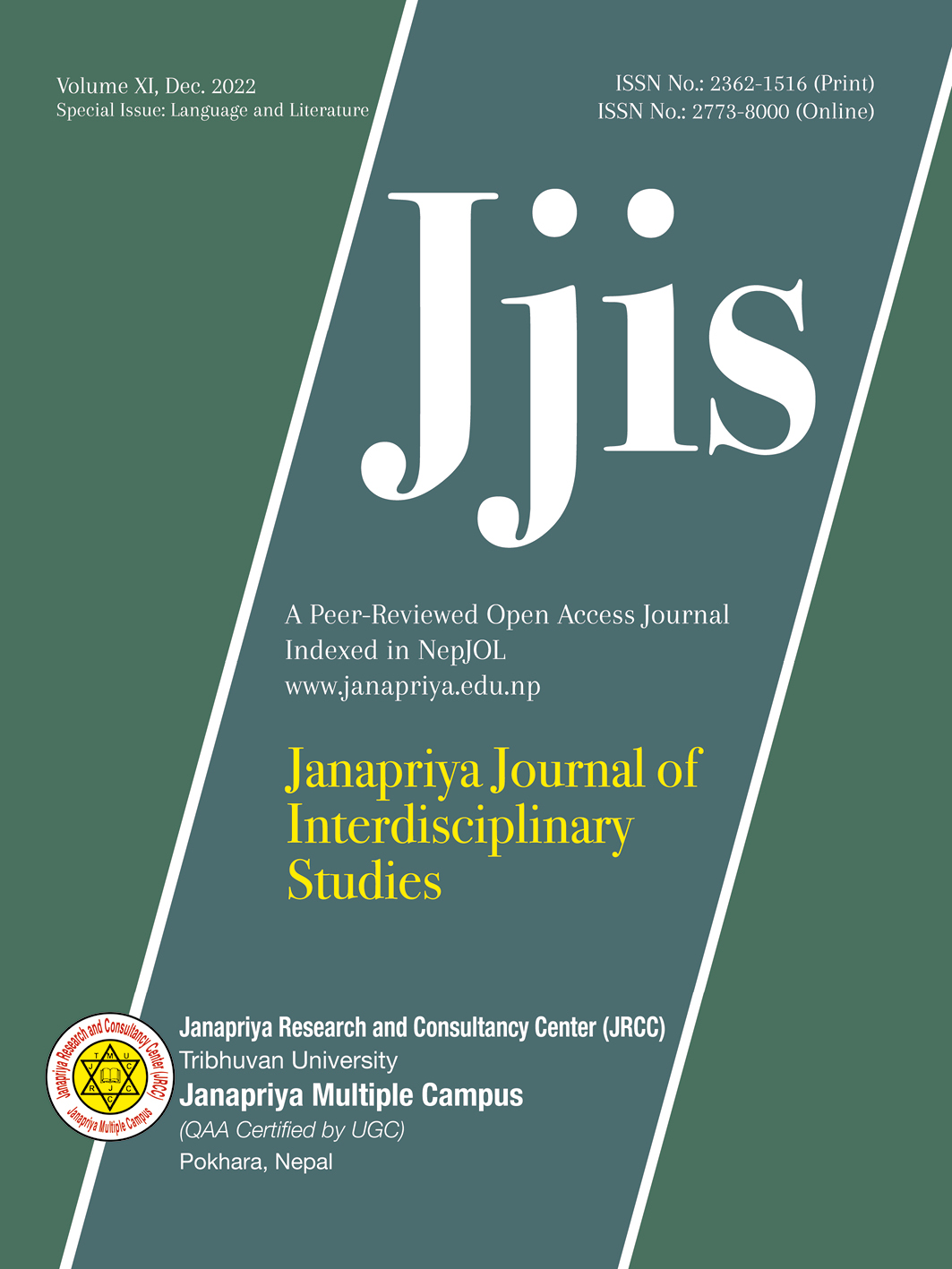Tenets of Nātyaśāstra on Abhijnānaśākuntalam
DOI:
https://doi.org/10.3126/jjis.v11i1.53908Keywords:
Abhijnānaśākuntalam, dramaturgy, nātaka, Nātyaśāstra, tenetsAbstract
This paper examines and unveils the tenets of Nātyaśāstra postulated by Bharatmuni in Kālidāsa’s play, Abhijnānaśākuntalam. Kālidāsa invokes Lord Śiva through his eight embodied forms – water, fire, priest, the time setting sun and moon, earth, sky and air. This is the pattern of Nāndῑ (benediction) as developed by Bharatmuni. The play also implements Bharatavākya as a concluding part of the play where Duśyanta extends wishes for the welfare of all. The dramatist divides the play in seven acts which is the parameters of Anka proclaimed in Nātyaśāstra. He exploits the paradigm of Prāsangika, which is known as the sub plot of the play. It revolves around the characters like Anasūyā, Priyamvadā, Mātali, Menakā, and so on. Likewise, there are five Sandhis (junctures) in the play like Mukha, Pratimukha, Grava, Vimarśa and Nirvahana. The eight rasas (sentiments) like Sringāra, Hāsya, Karunā, Raudra, Vira, Bhayānaka, Bibhatsa, and Adbhuta consolidate the essence of the play. All these tenets are so integrated in the play that they elevate the readers carrying them to the plenum of aesthetic pleasure. This play, in this regard, becomes the perfect exemplification by blending the tenets of Nātyaśāstra as propounded by Bharatmuni. The paper applies the dynamics of qualitative approach, applying the interpretive design to expose the dynamics of Nātyaśāstra.




